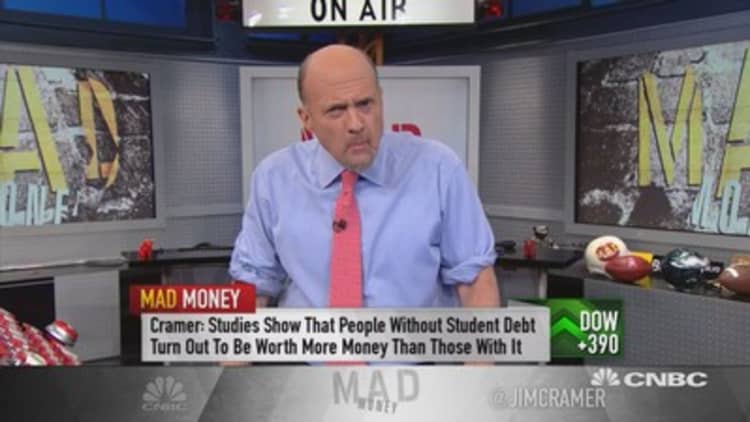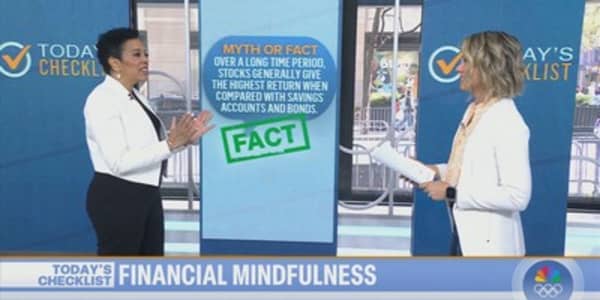Student loan borrowers who work in public service jobs may want to double-check that they are doing everything they need to if they want their loans forgiven under a federal program.
October marked the first month in which borrowers could have made enough qualifying payments to apply to have their debt wiped away. About 139 borrowers reached that threshold as of the end of 2016, according to the National Association of Student Financial Aid Administrators.
More than 500,000 borrowers have indicated they intend to pursue forgiveness through the program, according to a report issued by the Consumer Financial Protection Bureau earlier this year. More than 32 million individuals are repaying loans that could be eligible, according to the CFPB.
The program has not been immune to criticism. A Trump administration budget proposal that was introduced earlier this year suggested eliminating it completely for borrowers who take out loans after July 1, 2018. In August, the Massachusetts Attorney General sued one of the largest federal student loan servicers, alleging that the firm prevented borrowers from making qualifying payments.
The program, known as the Public Service Loan Forgiveness Program, was established in 2007. The aim was to help public service employees who have high student loan balances and low salaries repay their debt in 10 years. Those who are eligible include teachers, nurses, firefighters and police officers, among others.
To qualify for loan forgiveness, borrowers must fulfill four requirements: they must have loans through the William D. Ford Direct Loan Program; they must make 120 qualifying payments; they must be enrolled in repayment plans that qualify; and they must work full-time for a qualified employer.
But there are details in those stipulations that can trip borrowers up.
"Due to servicing break downs, they are running into unnecessary roadblocks to achieving each of these four objectives," said Seth Frotman, assistant director and student loan ombudsman at the CFPB.
Some public service employees have found out that, though they have been paying their loans back for a substantial amount of time, say six or seven years, those payments do not qualify toward forgiveness, he said.
"Start taking the steps now to ensure that if you are working toward student loan forgiveness that that is actually the case," Frotman said.

Here are some of the traps borrowers have run into.
Not being enrolled in the right loan program
Only Direct Loans are eligible for repayment for forgiveness under the Public Service Loan Forgiveness Program.
Other kinds of federal loans — Federal Family Education Loan Program loans or Perkins Loans — are not.
Borrowers can consolidate those loans into a Direct Consolidation Loan in order to become eligible to participate in the forgiveness program.
Not participating in the right repayment plan
Income-driven repayment plans are considered qualifying repayment plans for the Public Service Loan Forgiveness Program. Other loan repayment programs — such as graduated and extended repayment plans — do not qualify.
If you are enrolled in a payment plan that does not qualify, your payments toward your loans will not count toward forgiveness.
Not working for a qualified employer
Eligible employment in public service includes working for federal, state, local or tribal governments or a not-for-profit organization that is tax exempt under Section 501(c)(3) of the IRS code. Other not-for-profit organizations that provide education, health, legal or public safety services may qualify, according to the CFPB.
One important thing to remember: What your role is within that qualified organization doesn't matter.
"It doesn't matter what you do for a living," said Betsy Mayotte, founder and president of The Institute of Student Loan Advisors, which provides free student loan advice to borrowers. "It matters who issues the pay check."
Not making the correct number of payments
While you need to make 120 payments in order to qualify for loan forgiveness, the payments don't need to be consecutive. That means that you won't have to start over if you temporarily leave the public sector or become unemployed.
Payments that count need to be made on time and in full while you're working for a qualified employer. You also want to be sure you make your payments on time and track the processing of them.
Not documenting your progress
While this does not directly count toward the four requirements to have your debt forgiven, it is a good idea to troubleshoot for issues before they arise.
The Department of Education encourages everyone to submit an Employment Certification Form annually, though it is not required. This helps verify that you are on track toward having your debt dismissed.
Mayotte recommends all borrowers keep track of their payments and Employment Certification Forms, as many employers do not hold onto records as long as they used to.

What to do if you run into problems
As more borrowers come up on the 10-year mark, more individuals will likely run into issues with as they try to have their debt wiped away, according to Frotman.
"This is going to be an enormous issue for countless borrowers, and we need to be ready for this because this is certainly not a problem that is going away," Frotman said.
It is important to remember that "the name of the game is to pay the least amount over time," according to Mayotte.
That means that if you have a rude awakening that you are not qualified for forgiveness under the program, it may not pay to start over.
Mayotte recommends that borrowers consult an online calculator from the Department of Education that shows how much you will pay under each plan available to you and pick the least expensive option.
Once you've reached the 10-year mark and apply to have your debt wiped away, don't quit your job just yet, Mayotte advised.
Not only do you have to work for an eligible employer, but you also have to be employed with them when your application is reviewed, which can take about 60 days.
"If you're not there anymore, then you're not going to qualify," Mayotte said.






